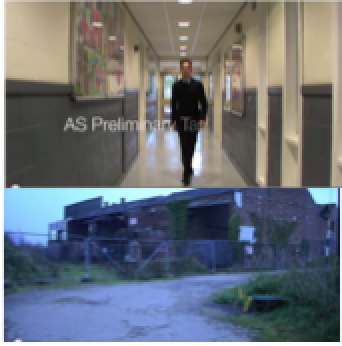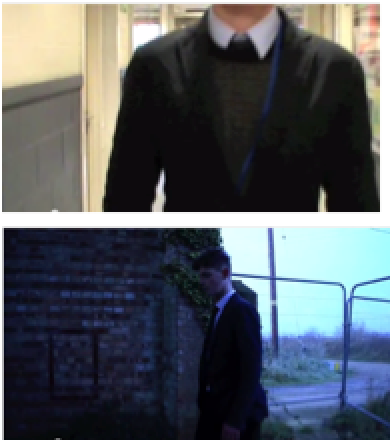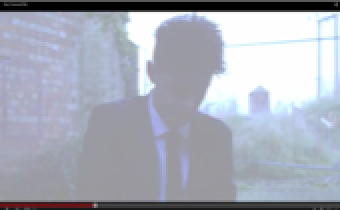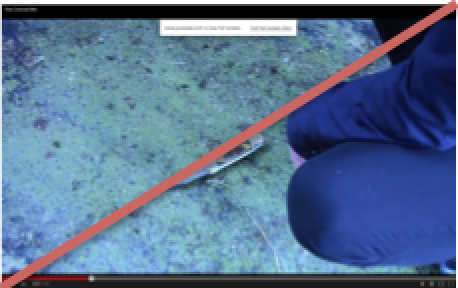Thursday, 29 January 2015
Q5: (Commentary) How did you attract /address your audience?
During research, I believe that we fulfilled our audience's expectations. Their feedback suggested that what makes a thriller interesting is how well edited the final piece is. From this feedback, we added graphic matches to better our final production as it made it flow continually. Also realism is a key factor, so we did not exaggerate our scenes too much by keeping shots close and quick to also maintain it's quickness. Finally for the use of sound, our audience suggested the use of non diegetic sounds to keep them on edge and to keep tension flowing and so we used no dialogue. However we used a lot of incidental sounds to accompany events and reinforce the fast paced narrative.
Sunday, 25 January 2015
Q4: (Polls) Who would be the audience for your media product?
After asking a varied amount of people to view our production, we asked, using PollEverywhere on what age was suitable to viewing our production and overall we got a response of the age of '15-17' as being the most suitable with a total of 7 responses out of the 12 people we asked.
Saturday, 10 January 2015
Q7: (Glogster) Looking back at your preliminary task, what do you feel you have learnt in this progression from it to the full product? (Full screen)
During planning and research, we learnt a lot about the conventions of a thriller and how these allow the aid of tension and suspense found within. For research, we went thoroughly into: shot types and how they bring different meanings to the audience, the use of sound and how this may aid tension, editorial techniques and how thrillers should be kept at a fast rate to maintain tension and to keep the audience on the edge of their seats, also we learnt about mise en scene and what you would find in a typical thriller. All this including planning of what shots to use, where to film, what mise en scene we will integrate all helped in the process of making the production and emphasised it’s importance in thorough research and planning when it comes to the final product. We needed to know all this to alter the mood of the scene and project certain feelings towards the audience, in thrillers, we want the audience to feel on edge and also intrigued and to do this we had to research on how we can create this feeling.
 Looking at shot types helped a lot since our preliminary, from knowing little about how meaning can be generated, to having a well grounded knowledge of key conventions. We used a varied amount of shot types; we made use of an extreme long shot in which we did not effectively use in our preliminary, this helped in establishing the setting and emphasised it’s isolated area to add tension. (Top picture shows preliminary, and bottom is our final production) We did not make use of this shot in our preliminary and so location is unclear.
Looking at shot types helped a lot since our preliminary, from knowing little about how meaning can be generated, to having a well grounded knowledge of key conventions. We used a varied amount of shot types; we made use of an extreme long shot in which we did not effectively use in our preliminary, this helped in establishing the setting and emphasised it’s isolated area to add tension. (Top picture shows preliminary, and bottom is our final production) We did not make use of this shot in our preliminary and so location is unclear. We made clear use of extreme close up and close ups in our final production to bring tension and emphasize aspects in the scene such as the weapons; emphasizing it’s danger and making the audience feel the tension build, interesting them further to watch. This time round we used a panning shot instead of a tracking shot from our preliminary, we did this due to it was difficult to complete, without the shot shown being unstable. We have advanced from this and made sure that the shot was set up on a tripod, overall giving it a smoother flow. From the screenshot on the right of our preliminary, we tried doing a tracking shot handheld however, the shot was unsteady and it would have been much better if we kept Luke in the center of the frame to provide all attention to the character.
We made clear use of extreme close up and close ups in our final production to bring tension and emphasize aspects in the scene such as the weapons; emphasizing it’s danger and making the audience feel the tension build, interesting them further to watch. This time round we used a panning shot instead of a tracking shot from our preliminary, we did this due to it was difficult to complete, without the shot shown being unstable. We have advanced from this and made sure that the shot was set up on a tripod, overall giving it a smoother flow. From the screenshot on the right of our preliminary, we tried doing a tracking shot handheld however, the shot was unsteady and it would have been much better if we kept Luke in the center of the frame to provide all attention to the character. This time round, we used much more of a variety of transitions. We used flashbacks to cross cut between the present and past and provide a tension build, we also used crossfades and fades to white and black. We used these more effectively in our production than our preliminary, using it to provide a fast paced feel but also used transitions specifically to signify different things; fades to black to signify flashbacks (black was used instead of white to connote death), fades to white to signify the present and cross fades to signify time passing. We overall improved in our editing, with using straight cuts more effectively, to create a jagged effect to give distortions and to express an uneasy atmosphere.
This time round, we used much more of a variety of transitions. We used flashbacks to cross cut between the present and past and provide a tension build, we also used crossfades and fades to white and black. We used these more effectively in our production than our preliminary, using it to provide a fast paced feel but also used transitions specifically to signify different things; fades to black to signify flashbacks (black was used instead of white to connote death), fades to white to signify the present and cross fades to signify time passing. We overall improved in our editing, with using straight cuts more effectively, to create a jagged effect to give distortions and to express an uneasy atmosphere.We thought more about framing more in our production than when we were doing our preliminary. With the ‘Golden mean’, we used it in our production to attract attention to certain aspects in the scene; we used it for the knife to emphasize the weapon more effectively, to show it’s relation in the crime scene more significantly. In our preliminary however, we did not think much of the golden mean, as you can see some shots are distorted. With the rule of thirds, again, we thought about this more in our production with some scenes such as that when the innocent victim is being killed; we used this to attract more attention to the areas such as the rope. I also believe that we have improved in our continuity as a whole, in our preliminary, when Luke opens the door, the match on action is not used that effectively, however we have advanced in this when the Detective is walking through the crime scene; it flows more smoothly.
Subscribe to:
Comments (Atom)


